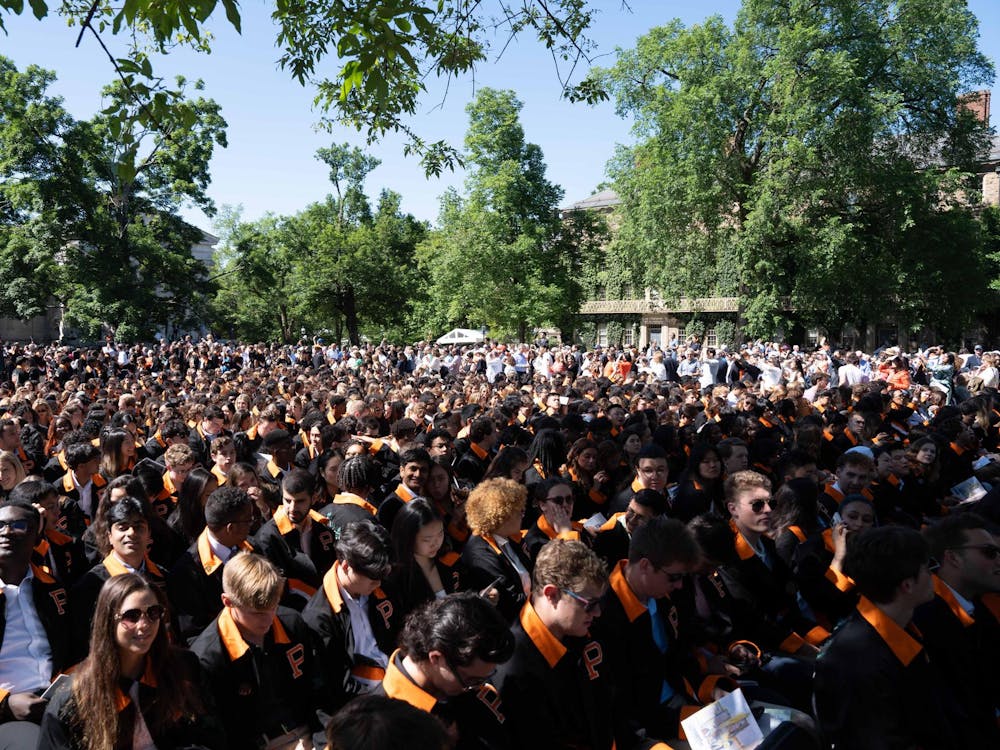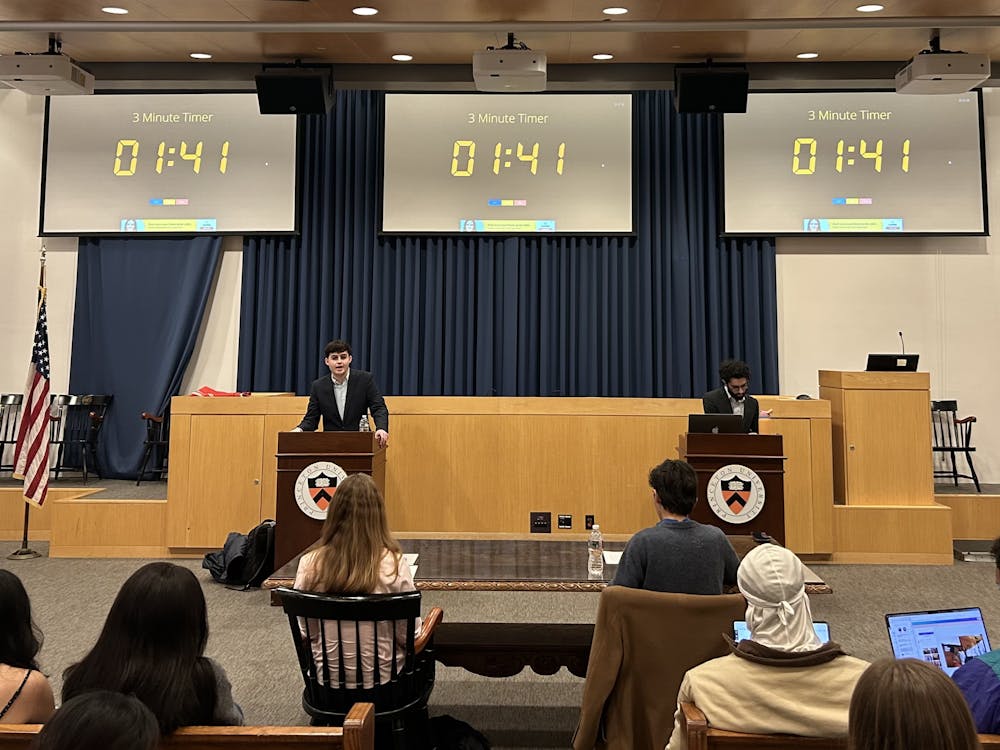The giant sucking sound one hears on the Princeton campus in the late fall has nothing to do with Ross Perot's predictions about NAFTA; it is made by a huge leaf-scrunching machine proudly deployed by the grounds men and synchronized to move about campus in unison with the schedule of my course lectures. There are many deciduous trees on campus, and the resulting leaf-mold, together with tons of raw leaves still unpulverized, is carted to a site between the canal and the West Windsor athletic fields where, over time, it happily decomposes into a nutritious and friable soil supplement much valued by the university horticulturists — and numerous other community gardeners including your columnist, who has been availing himself of this valuable ecological resource for about 30 years.
My latest attempt to collect some of this rich leaf mold, however, was rudely arrested by a newly-placed sign, elegant in its typography, imposing in its size and intimidating in its content, declaring the molding heaps of leaves "Private Property" on which "No Trespassing" would be allowed. Now the blocking of access to university leaf-mold customarily available to generations of Princeton gardeners is a crime against civility and the common weal at least a grievous as the infamous British Enclosure Act, and it doubtless stems from the same semi-fascistic mentality. I intend to contest this high-handed novelty in the appropriate arena. What interests me for the purposes of this column is the sign itself. It is part of a pandemic of placards that suggest that the Department of Facilities has come to think of itself as a branch of the Signal Corps.
My first awareness of a new conspiracy of conspicuous communication came upon me while I was driving along Faculty Road as it flanks Jadwin Gym and the parking lots to its east. Apparently dissatisfied with the conventional speed limit signs provided by local governmental agencies, the University (I presume) has posted signs of its own. These signs are very comely and elegant. The statutory numerals are centered within a neat circle in a Euro-allusive style that makes one feel that they must certainly denote kilometers rather than miles, and that instead of finding the boathouse around the curve, one will stumble upon a seedy bistro advertising Cinzano and offering Chambres/Rooms/Zimmer.
But that was only the beginning; I soon noticed new signs everywhere. By the side of the Frist Campus Center it suddenly said, quite unnecessarily, "Frist Campus Center." You get the picture. The new signs are of a superior quality. Someone has thought productively about their design and executed them with skill. They employ a nicely serifed conservative font, some version of Caslon Old Face Roman. They sport also the bookish coat of arms of the University. In front of the Center for Jewish Life the Novum no less than the Vetus Testamentum points out the "Center for Jewish Life."
One necessarily experiences ambiguous feelings in the face of the hypersemiotic phenomenon, for it hints at the sad truth that we are becoming a common venue of strangers rather than a community of common experience. In the good old days practically nothing on the Princeton campus was visually designated but the trees. You simply had to know where Whig and Clio were and which was which. Such information was part of a tribal education propagated solely by oral tradition. It would have been considered cheating, or at least in ghastly bad taste, to employ a sign to help people find Middle Dod or Upper Holder. Most faculty to this day would be unable to identify by name any significant number of the dormitories. Trees, on the other hand, were entirely different. Each tree of any note was clearly denominated. It was quite comforting, actually, to know that one could rely on little Latin trots, discreetly fastened among the moss and mushrooms where trunk met greensward, to aid in distinguishing arboreal species. Folks hoping to register for their flu shorts at the McCosh Infirmary used regularly to show up in the English departmental office in McCosh Hall, but nobody was allowed to confuse a quercus albus with a quercus rubrus, let alone with a fagus of any sort.
Things have surely gone too far when, in front of Dillon Gym, there is a sign that says "Dillon Gymnasium." I mean, what else could something that looks like the offspring of Mont Saint Michel sired by the Battersea Power Station be, except Dillon Gym? You don't need to rub it in. Such signal excess raises a legitimate worry: where will it ever end? Soon the whole campus may look like the Duden pictorial dictionaries or those children's books in which tiny texts and tiny images jostle one another on crowded pages like warring ant colonies. Perhaps we shall all be issued with lightweight sandwich boards to be donned whenever we step out of our offices or dorm rooms: "Provost Gutmann," "Proctor Kenny," "Lisa '04," "Foreman — Sign-Making Shop," that sort of thing. John V. Fleming is the Louis W. Fairchild '24 professor of English. He can be reached at jfleming@princeton.edu.







